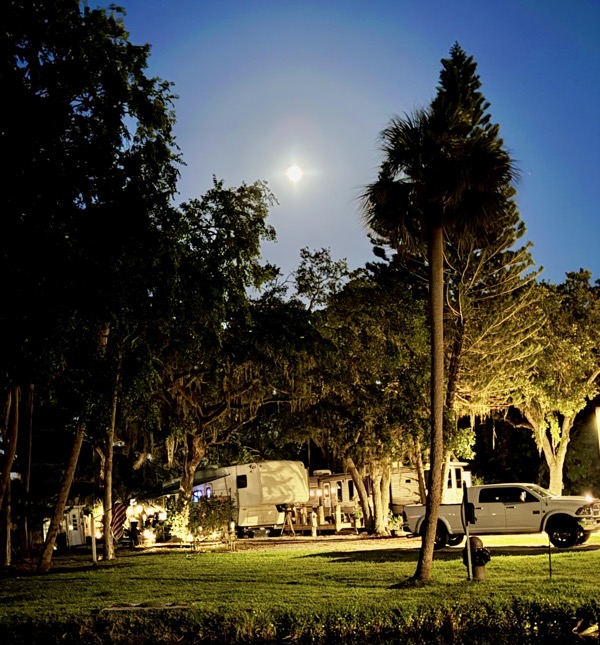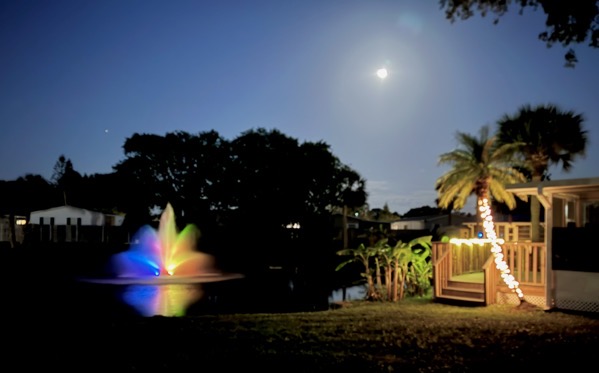Friday, April 11, 2025
Today we got an early start (by our standards, at least) for our much-anticipated visit to the Kennedy Space Center. The alarm went off at 6:30, and we reluctantly rolled out of bed, shaking off the sleep. After a quick shower in the campground bathhouse and a quick breakfast, we unhooked the RV and were on the move about 8:15.
As we pulled out of the Cape Kennedy RV Resort, we couldn’t help but reflect on our stay. Despite some early reservations, it had turned out just fine, even though their KOA status had been revoked. The new owners were clearly putting in the effort — the place had a friendly, low-key charm, and it felt like improvements were already under way to make it more welcoming for travelers like us.
We cruised south on I-95 under a clear sky, then turned east onto Columbia Boulevard. The road took us across the Indian River, sunlight glaring off the water as we made our way onto Merritt Island, the gateway to America’s space history.
Roughly 30 minutes later, we turned off the highway and entered the Kennedy Space Center grounds. On our way in, we passed the sleek buildings of Blue Origin, a reminder that the space race is far from over — it’s just changed hands.
After a short drive, we reached the main entrance gate, paid the $20 parking fee, and were directed to Lot 4, which was practically empty — a small victory that made parking a breeze. With our gear in hand and a growing sense of excitement, we headed toward the main gate, eager to start the day.
Security was smooth, and once inside, I jumped in line for general admission while Jane headed off to check in for the special program we’d booked: “Fly with an Astronaut.” The adventure was just beginning.
—— Entering Kennedy Space Center ——
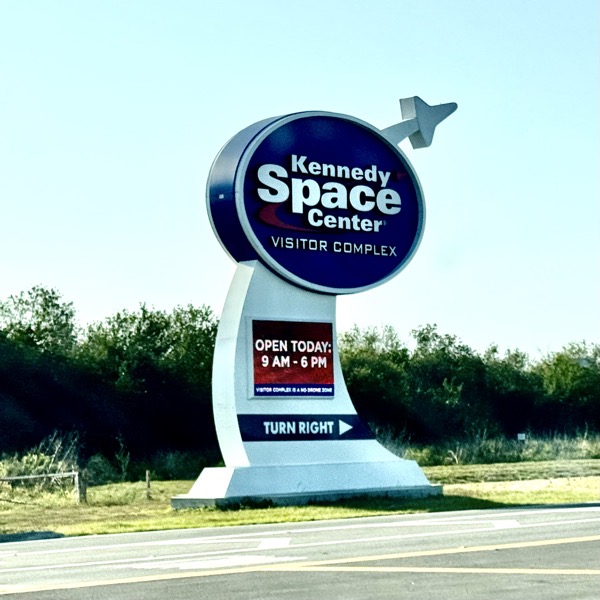
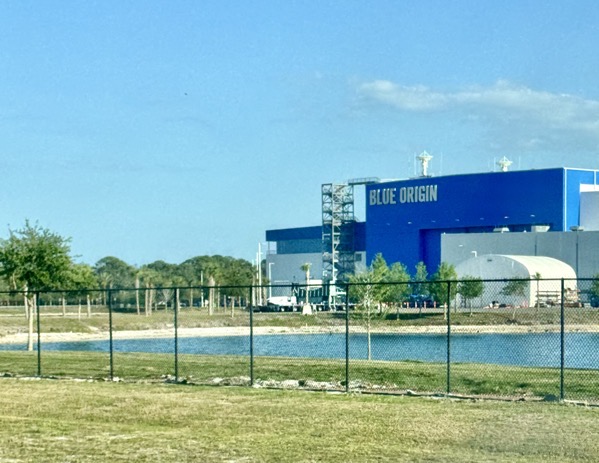
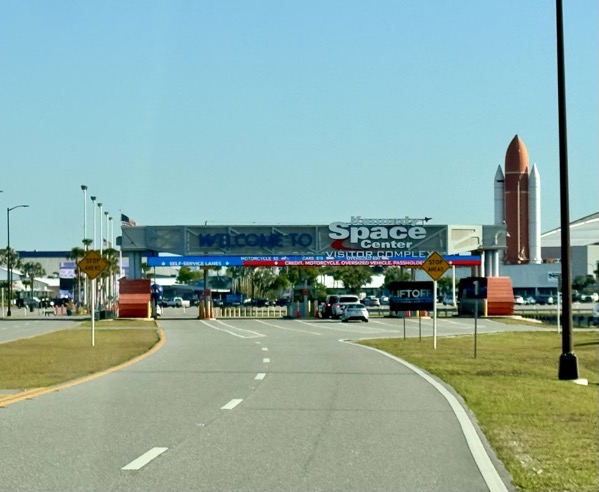
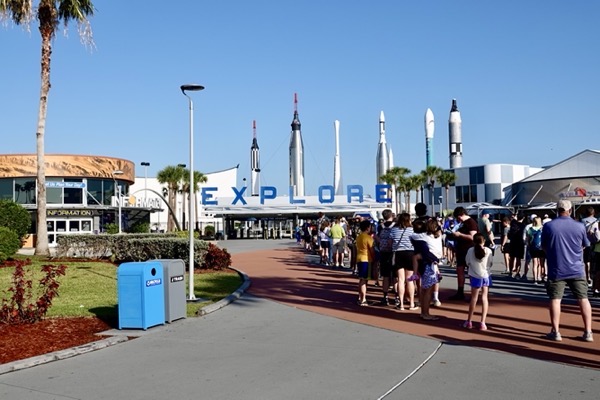
Jane learned that our program would begin in the nearby Heroes & Legends building, so we were directed to bypass the line and headed there directly. Inside, we checked in and were given our special event badges for the day. As some of the earliest to arrive, we had a bit of extra time to explore. On one side of the foyer, we browsed the U.S. Astronaut Hall of Fame, pausing to read about the brave pioneers who helped shape space exploration. On the other side, we wandered through engaging exhibits about the Mercury, Gemini, and early Apollo programs — a fascinating walk through the foundations of NASA’s legacy.
Eventually, our guide for the day, Mark, gathered everyone back into the central foyer. He welcomed us warmly, distributed our “hearing units”, gave an overview of the day’s schedule, and introduced our special host: Astronaut Bill McArthur.
Coincidentally, Bill was also from North Carolina, which gave us a fun geographic connection. He shared a brief but impressive overview of his career, both in the U.S. Army and at NASA. Over nearly three decades, Bill flew on four Space Shuttle missions, including visits to Spacelab, the Russian space station Mir, and most notably, a long-duration mission aboard the International Space Station (ISS), where he served as commander and science officer for nearly six months.
—— Heroes and Legends Building ——
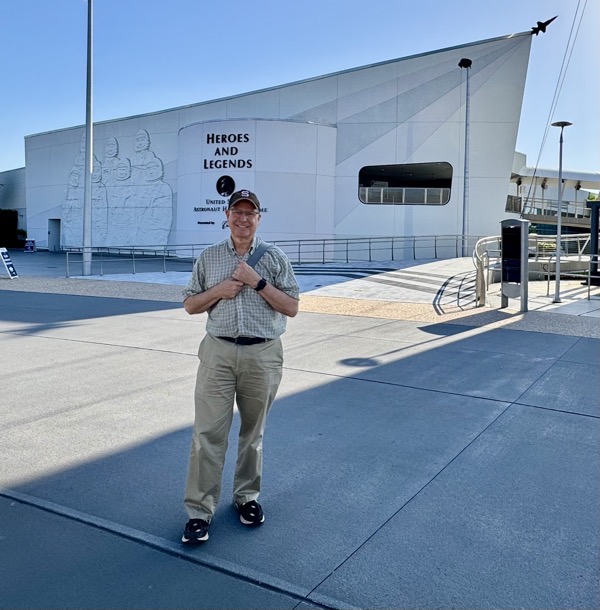
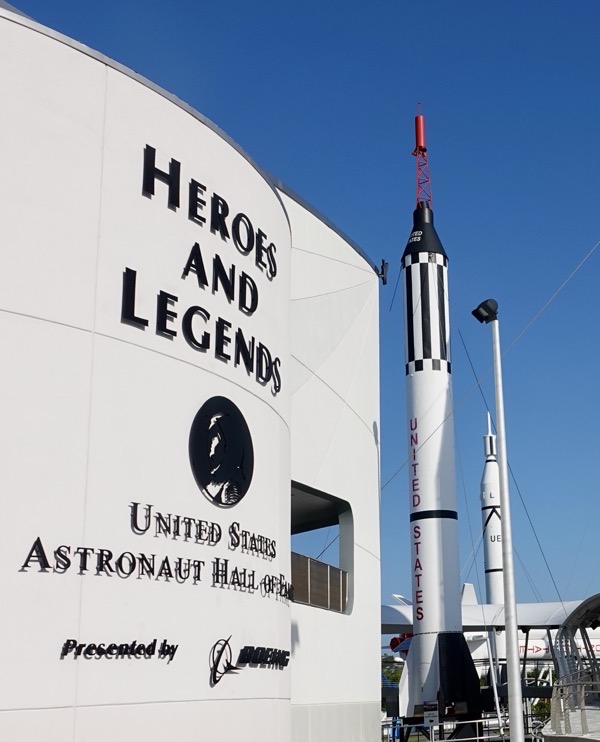
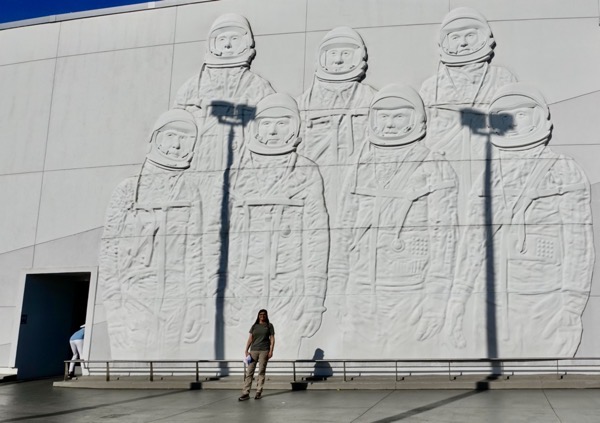
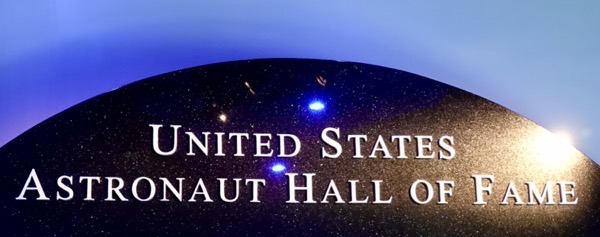
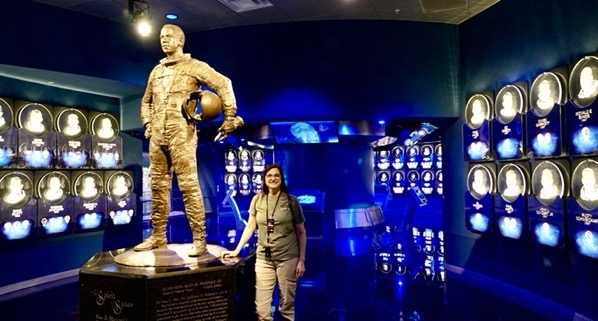
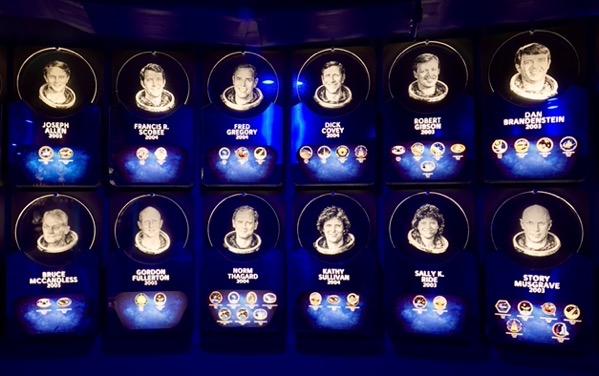
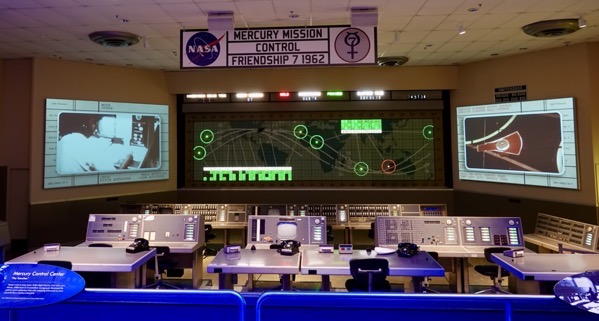

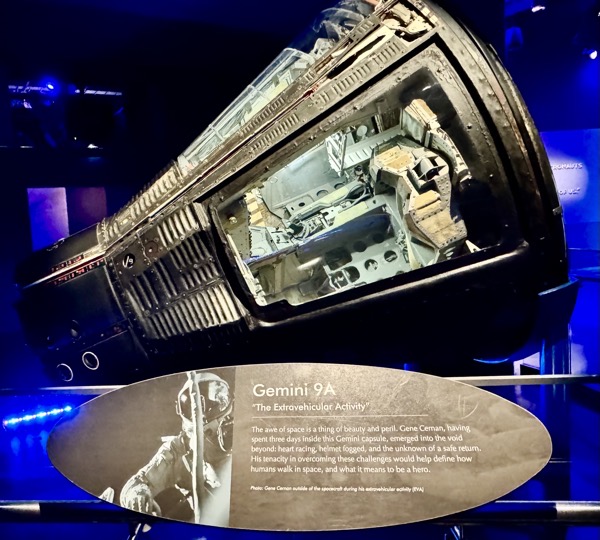
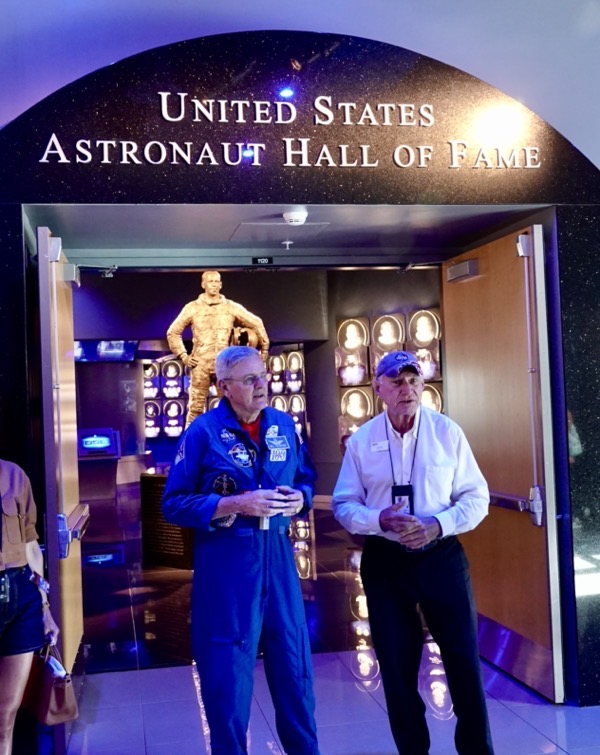
Astronaut Bill then led us through the Astronaut Hall of Fame, pausing to highlight notable astronauts and share personal stories about those he had flown with. His anecdotes brought the plaques to life, adding a human dimension to the historic faces lining the walls.
We exited through the rear doors of the building and were momentarily blinded by the brilliant Florida sun. As our eyes adjusted, we found ourselves standing in the awe-inspiring Rocket Garden, surrounded by towering giants of American spaceflight.
Bill guided us on a relaxed stroll through this outdoor exhibit, pointing out historic rockets like the Mercury-Redstone, Atlas, Titan II, and the powerful Saturn IB. With an easygoing tone, he offered fascinating commentary as we moved through this open-air timeline of space exploration, blending technical insight with personal reflections that made the experience all the more memorable.
—— Rocket Garden ——
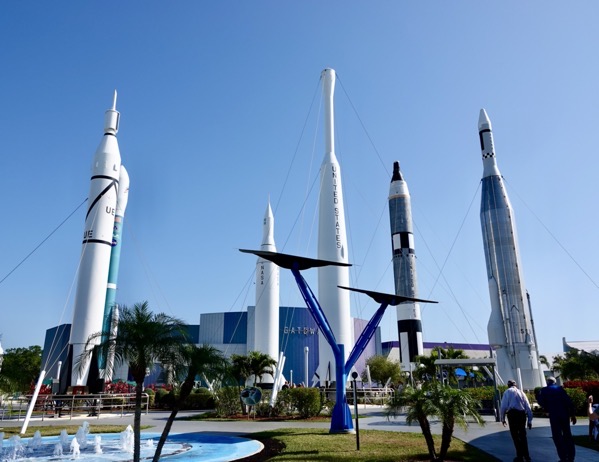
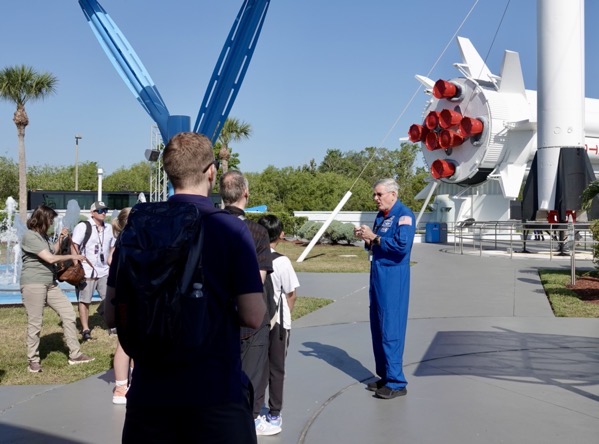

We boarded our private bus waiting for us near the Rocket Garden, ready for a guided tour of the Kennedy Space Center grounds. As we rolled along, we passed several notable buildings — ones we’d have the chance to visit later — but our first stop was at a rather unassuming structure that, despite its plain exterior, clearly held special meaning for Bill.
This was the Astronaut Crew Quarters, where astronauts were quarantined in the days leading up to their missions. Bill’s tone shifted slightly as he shared stories from this place — tales of final briefings, quiet moments of reflection, and the mix of nerves and excitement before liftoff. He pointed out the discreet exit where astronauts would walk out, suited-up and mission-ready, to board their ride to the launch pad. It was also the very spot where media cameras would capture those iconic, solemn moments of departure.
The building, though modest, felt steeped in history — a quiet witness to countless personal and national milestones.
—— Astronaut Crew Quarters ——
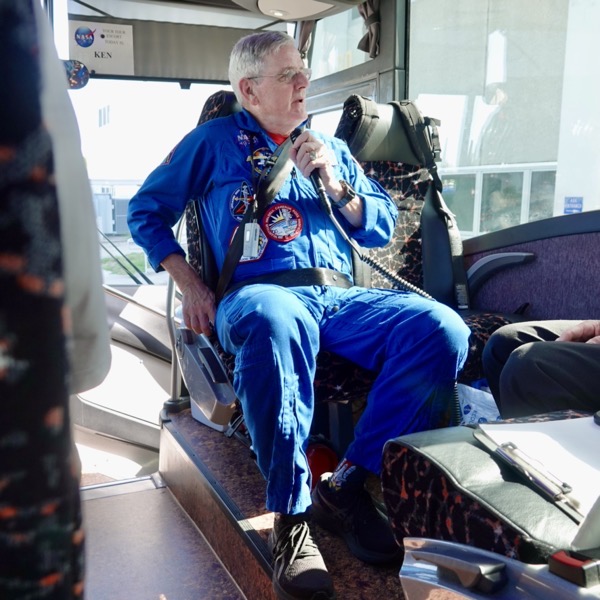

Next, the coach rolled past the impressive SpaceX facilities, a sleek and modern contrast to some of the older NASA buildings we had seen earlier. Massive structures loomed beside the road — assembly buildings, support infrastructure, and the unmistakable SpaceX logo emblazoned on the side of the hangars. Bill pointed out where rockets are refurbished, and where teams prepare for upcoming missions.
After a short drive, our bus made a turn and came to a stop where we were allowed to disembark. As we stepped out we had a direct line of sight to one of the historic launch pads, now active with new life under SpaceX’s stewardship.
There it stood: a sleek, towering Falcon 9 rocket, fully vertical and primed for launch. This particular mission was scheduled to deliver a fresh batch of Starlink satellites into orbit — part of SpaceX’s growing constellation aimed at providing global internet coverage. Seeing the Falcon 9 up close, with its minimalist black-and-white design charred from previous missions was surreal.
As we stood there, cameras came out, and Bill offered insight into the coordination required between NASA and SpaceX, and how commercial partnerships are helping propel the next generation of space exploration. The moment perfectly bridged the past and future — standing on the same ground where Apollo missions once launched, now watching the future of space travel take shape.
—— SpaceX ——

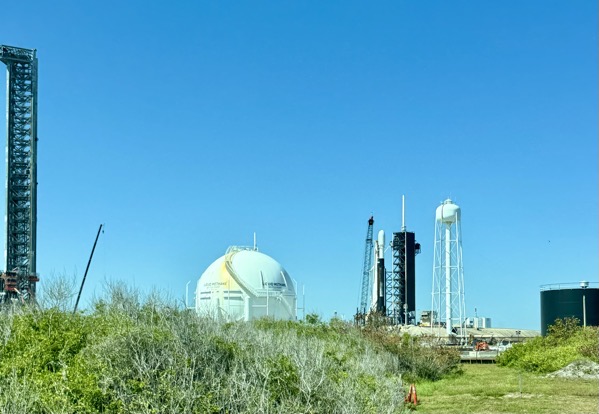
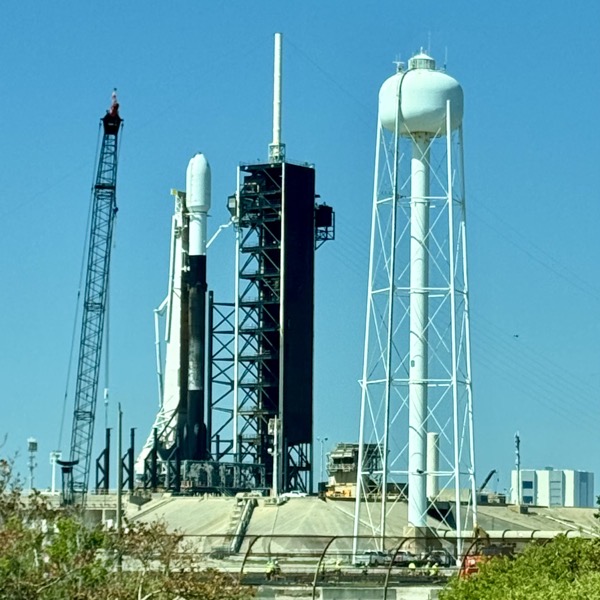
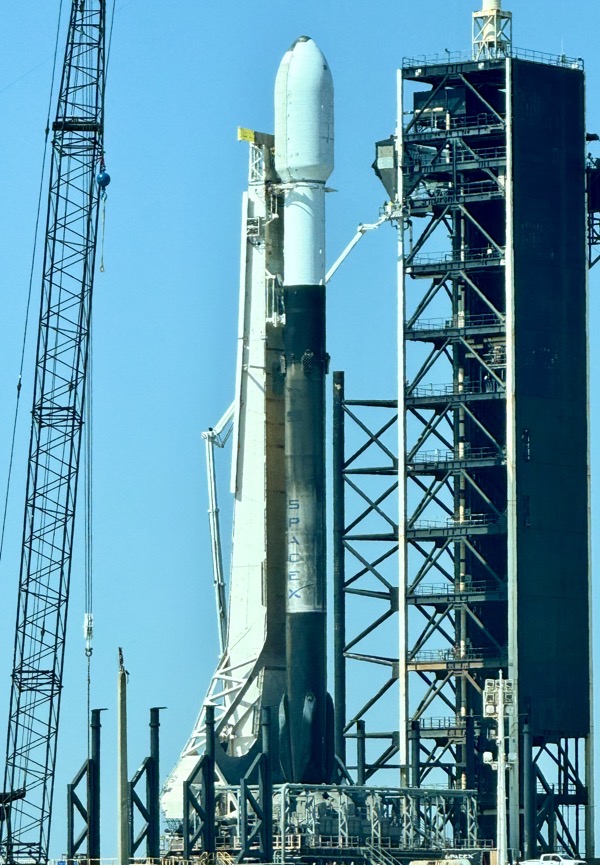
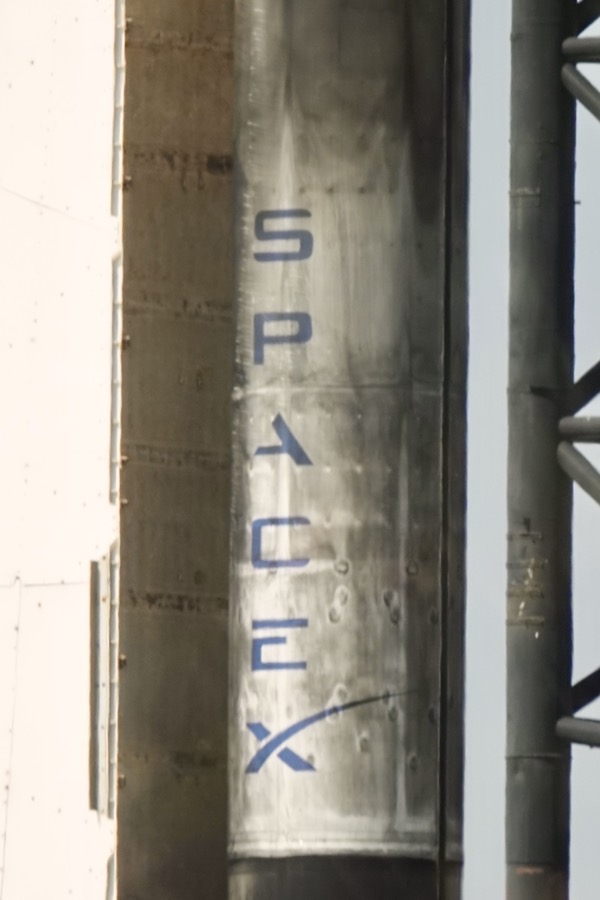
Our next stop took us on a short walk up a gentle rise to a small hilltop overlook, home to a monument honoring both the Apollo and Space Shuttle programs. The setting was peaceful, with plaques and sculptural elements paying tribute to the groundbreaking missions and the people behind them. From the top, we were treated to a panoramic view of the Kennedy Space Center grounds.
It was here, away from the crowd for a moment, that I had the opportunity to share a quiet one-on-one conversation with Bill about his early years growing up on a tobacco farm in Robeson County, North Carolina.
From our vantage point, we could clearly see the legendary Launch Complex 39, with Pad B to the north (on our left) and Pad A to the south (on our right). These pads had launched some of NASA’s most historic missions — from the mighty Saturn V rockets of the Apollo era to Space Shuttle flights, and now, SpaceX’s Falcon Heavy and Falcon 9 launches. Standing there, with Bill casually recounting stories tied to places we could see with our own eyes, the history of American spaceflight felt strikingly real and personal.
—— Apollo and Space Shuttle Momunent ——
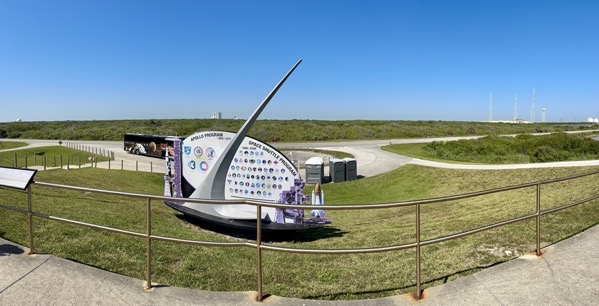
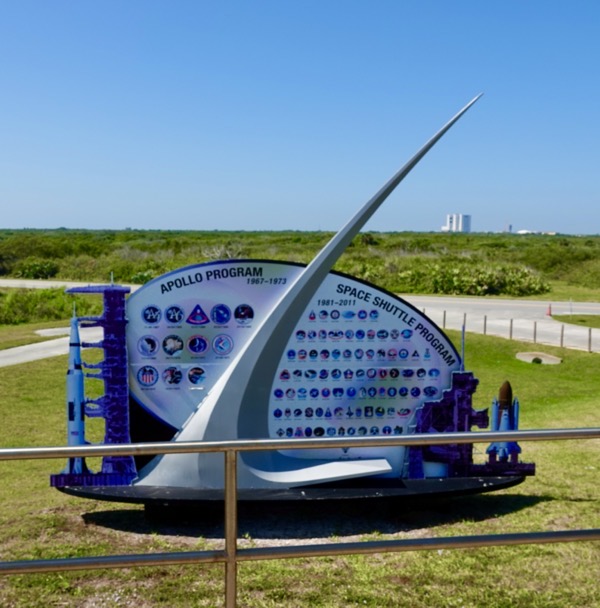
Next, our tour brought us face-to-face with one of the most awe-inspiring structures on the Kennedy Space Center grounds — the massive NASA Vehicle Assembly Building (VAB). We had caught distant glimpses of it throughout the day from various vantage points as we drove around the complex, but nothing compared to standing right in front of it. Towering above us, the VAB dominated the landscape with its sheer scale and historic presence.
Built to assemble the colossal Saturn V rockets of the Apollo era, and later used for the Space Shuttle program, the VAB remains one of the largest single-story buildings in the world by volume. Its stark, industrial exterior is made iconic by the enormous American flag painted on its side — so large, in fact, that each star is six feet across.
As we were gawking, we all lined up for photos with Bill, with the VAB serving as our dramatic backdrop. Bill, ever gracious, smiled and posed with each group, adding a sense of occasion to what already felt like a bucket-list moment.
It wasn’t just a photo op — it was a moment of shared reverence for space history, captured with someone who had actually flown the missions this building helped make possible.
—— Vehicle Assembly Building ——
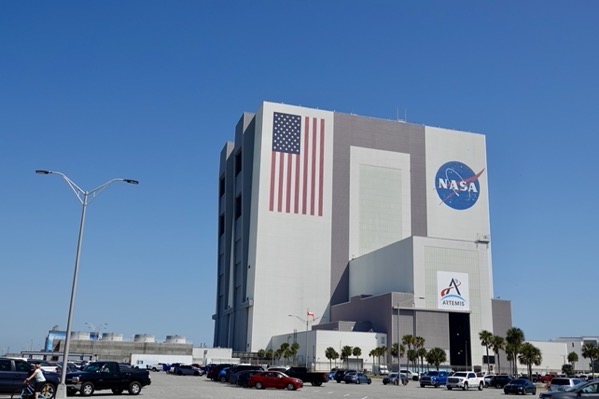
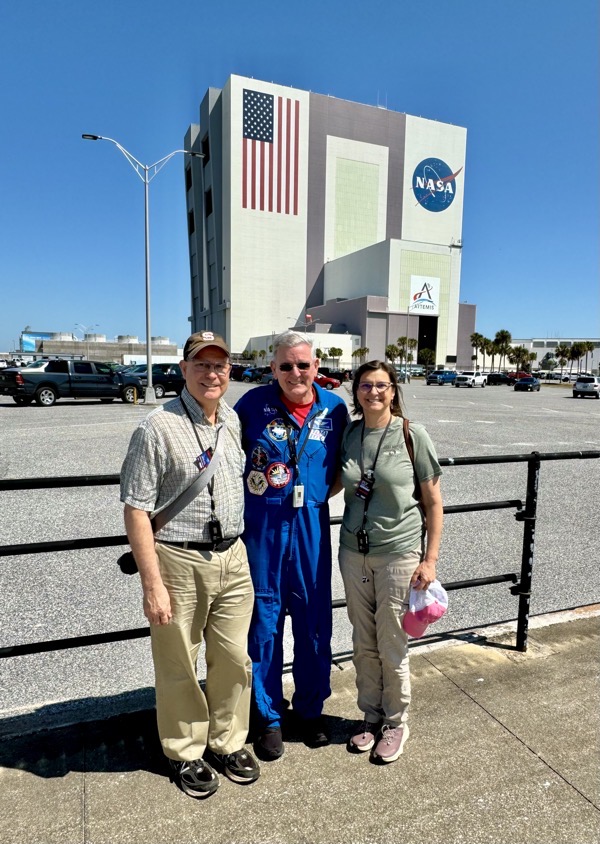
We then returned to the main visitor complex and entered a building where a large private room had been set aside for our buffet-style lunch. The huge space offered us a chance to recharge before the next leg of our adventure.
As luck would have it, Bill McArthur chose to sit at our table — a real treat. Over lunch, he graciously fielded a steady stream of questions from all of us. Alongside the usual curiosities about eating, sleeping, and daily routines in space, I was especially intrigued by his thoughtful perspectives on human travel to Mars. He spoke with a mix of realism and optimism, touching on the technical challenges, psychological demands, and the cooperation he believes will be essential for such a mission.
After we finished eating, Bill addressed the entire group again, spending another 45 minutes answering questions. His stories were engaging and full of insight — whether he was talking about spacewalks, launch day emotions, or training regimens, it was clear we were in the presence of someone who had truly lived the experience.
With full stomachs and even fuller minds, we headed out, energized for the next chapter of the day’s journey.
—— Lunch with an Astronaut ——
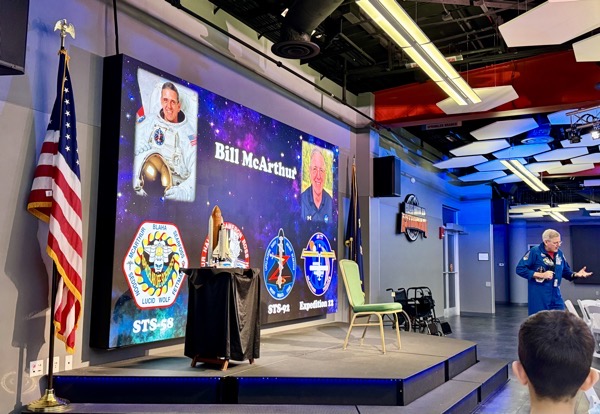
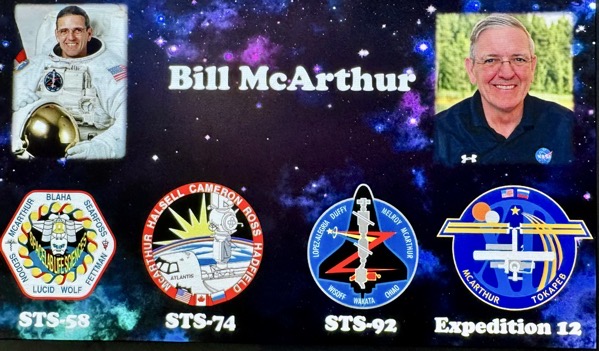
Our final adventure with Astronaut Bill McArthur took us to one of the crown jewels of Kennedy Space Center — the Space Shuttle Atlantis exhibit. As we approached the entrance, we were greeted by a towering replica of the Space Shuttle launch stack: two tall, white solid rocket boosters flanking an enormous rust-colored external fuel tank. The sheer size of the structure was staggering, and as we walked beneath it, I found myself recalling Bill’s earlier descriptions of what it felt like to be strapped to that very system — a controlled explosion that launches humans into orbit.
This was Bill’s shuttle — one of the orbiters he had actually flown aboard during his career. Seeing it up close, with Bill by our side offering casual but deeply knowledgeable commentary, brought an entirely new dimension to the experience. It was surreal to hear a man who had piloted this very machine speak so humbly and clearly about its mechanics, its quirks, and what it felt like to live and work in space aboard it. For many of us, this was the emotional high point of the day — standing in front of a space shuttle with someone who had flown it.
Next, it was time for us to experience a taste of what astronauts feel during liftoff — the Shuttle Launch Experience. Billed as the most realistic simulation of a space shuttle launch ever created, this immersive ride was developed with input from actual astronauts to ensure authenticity. As we entered the sleek, dimly lit briefing room, anticipation buzzed in the air.
We were guided through a pre-launch orientation, complete with video footage, mission-style narration, and a countdown sequence that built the tension. Then we strapped into our seats, reclined into a vertical launch position, and prepared for liftoff.
The simulator roared to life, shaking, rumbling, and pressing us into our seats with powerful G-forces that mimicked the eight-and-a-half-minute ascent into orbit. Lights flickered. Vibrations surged through the cabin. For a few thrilling minutes, we were astronauts, rocketing toward the stars.
At “MECO” (Main Engine Cut-Off), the shaking ceased and we were greeted by a stunning view of Earth projected above us — a breathtaking and humbling moment that gave us just a taste of what astronauts like Bill experience for real.
After our simulated flight, Bill rejoined us, and as we exchanged heartfelt goodbyes and thank-yous, he graciously posed for final group photos. This time, the backdrop was fittingly symbolic — the retired NASA Astrovan, the very shuttle once used to transport astronauts to the launch pad at the start of their missions. Standing there with Bill, beside the vehicle that had carried so many spacefarers — including himself — to the threshold of space, felt like the perfect closing moment to our unforgettable flight with an astronaut.
—— The Atlantis Building ——
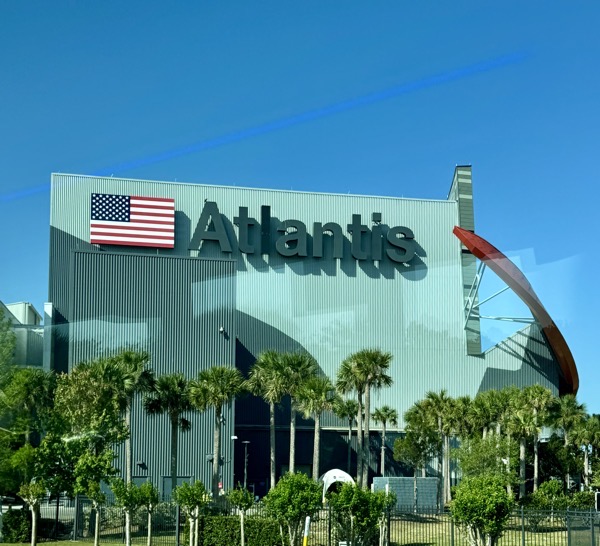
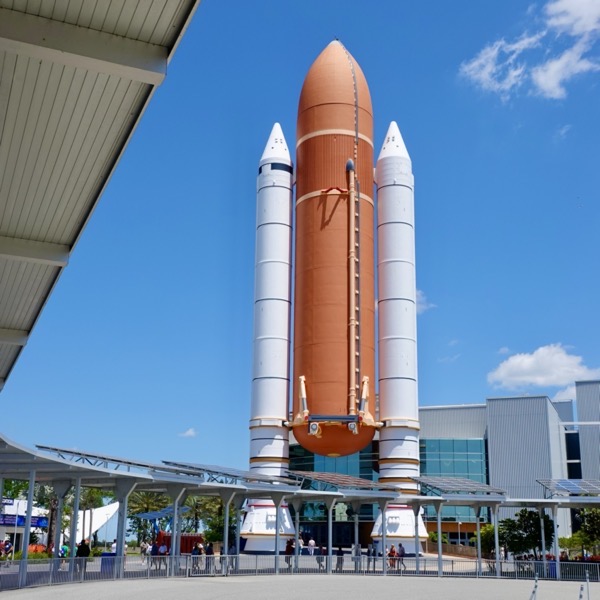
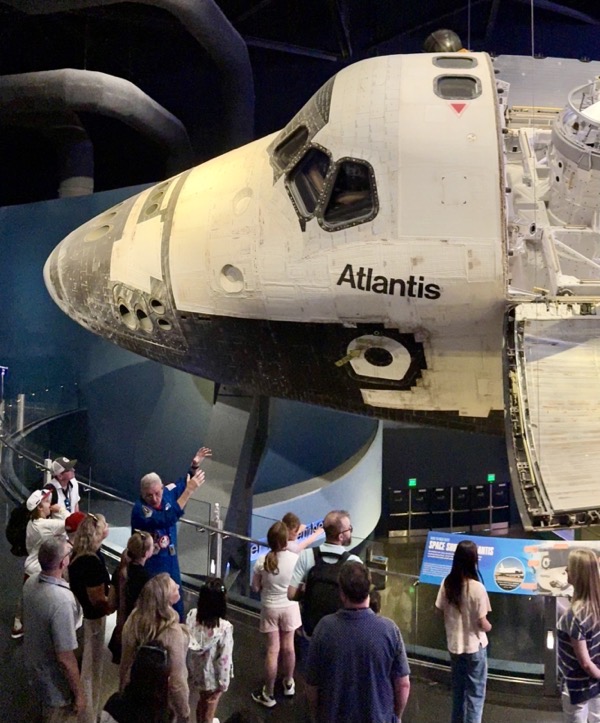
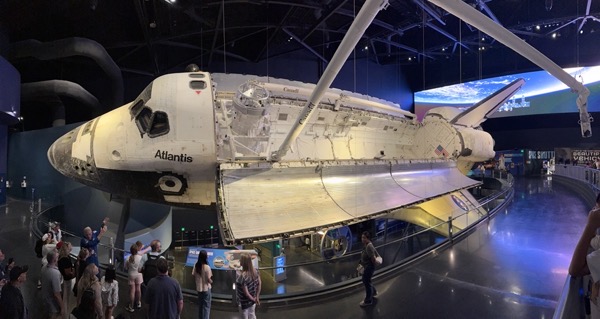
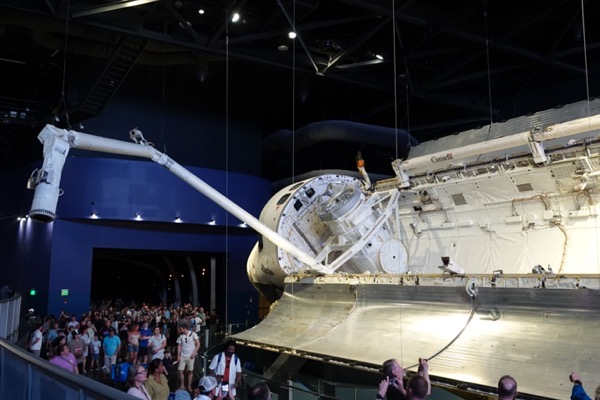
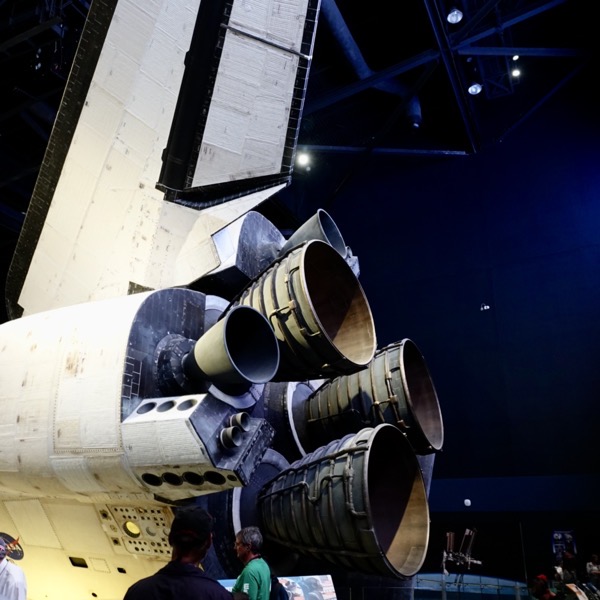
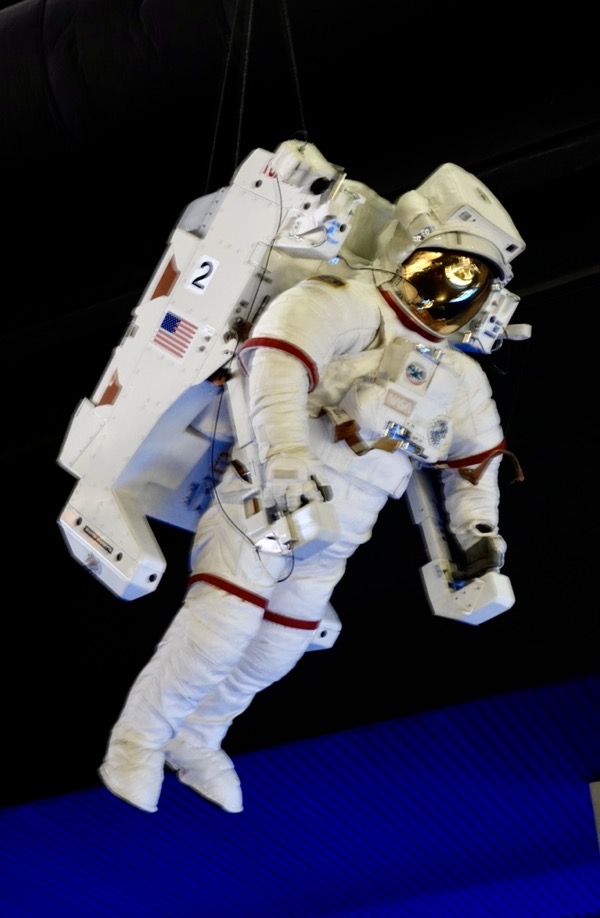
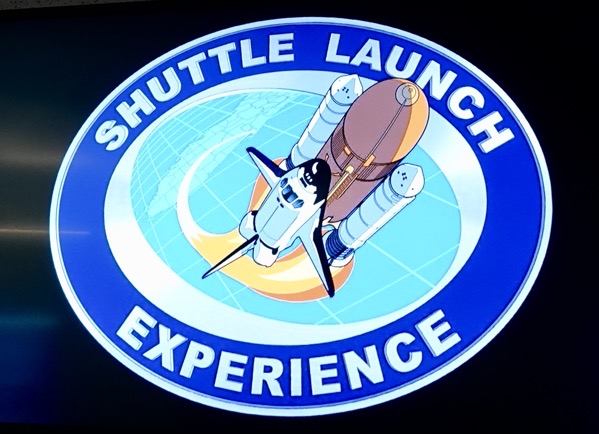
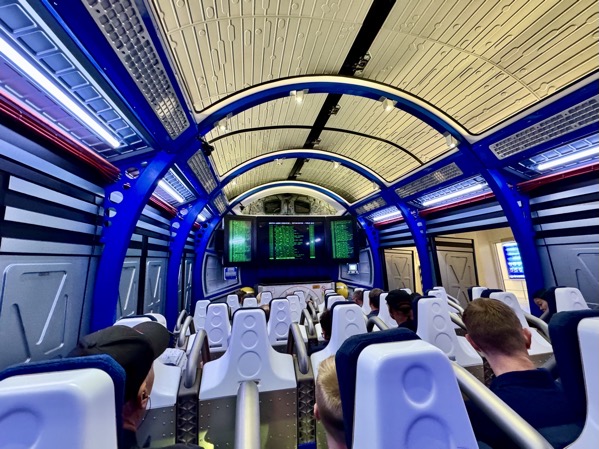
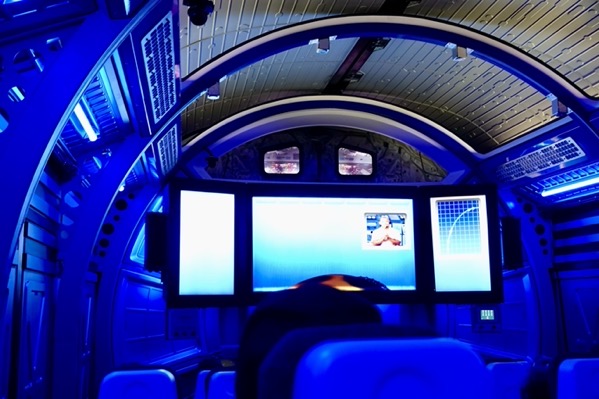
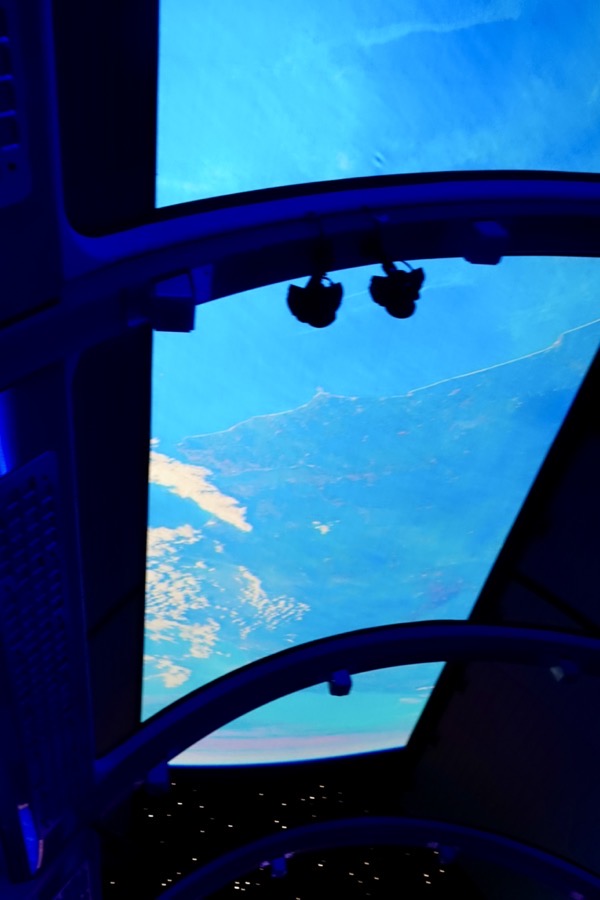
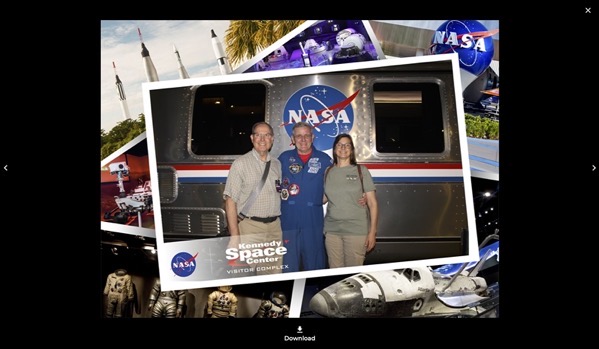
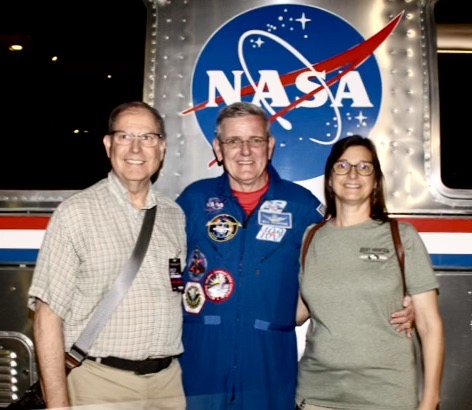
Mark then guided those interested outside to catch a bus to the next stop: the Apollo/Saturn V Center. Upon entering the building, we passed through a series of three different theaters that traced the history of space exploration—from the Soviet Union’s first manned orbit to Neil Armstrong’s historic first steps on the moon. After the presentations, we emerged into the building’s main hallway, where a massive Saturn V rocket was suspended overhead. We spent time browsing other exhibits about the Apollo program and its achievements before catching a bus back to the main visitor complex.
—— Apollo/Saturn V Center ——
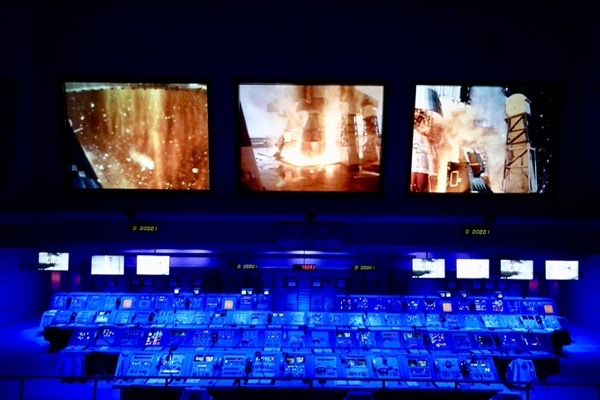
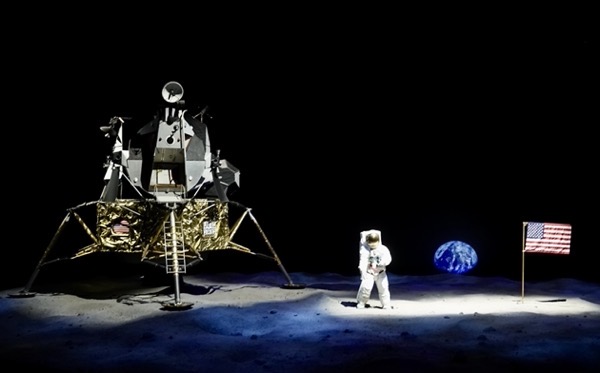
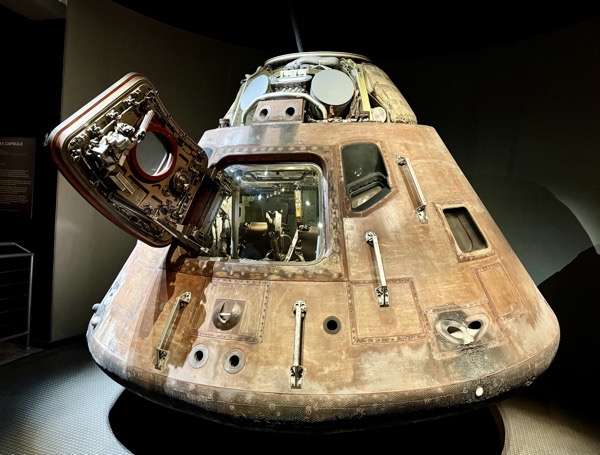
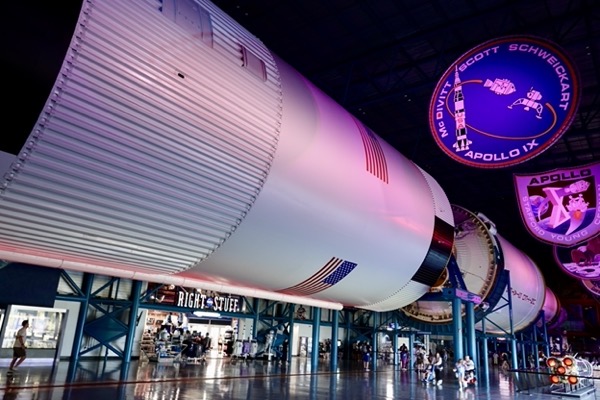
Back at the main visitor complex, we returned to the Atlantis building to try out some of the simulation machines. They were pretty busy, but we managed to snag one and made several unsuccessful attempts to dock a shuttle with the space station—definitely harder than it looks! Afterward, we hurried over to catch the next scheduled IMAX presentation. It was a mind-blowing film about the Webb Space Telescope and its incredible discoveries.
After the IMAX show, we made our way to the World’s Largest Space Shop. We browsed through its unique offerings and each picked out a souvenir T-shirt. By this point, we were starting to feel pretty worn out, so we decided to head out.
As we approached the RV, we noticed its headlights blinking slowly. Oops—caught up in the morning’s excitement, I’d left them on. Luckily, our RV has a handy feature for numpties like me: I just hit a button to jump the chassis battery with the house batteries, and we were good to go.
—— Space Shopping ——
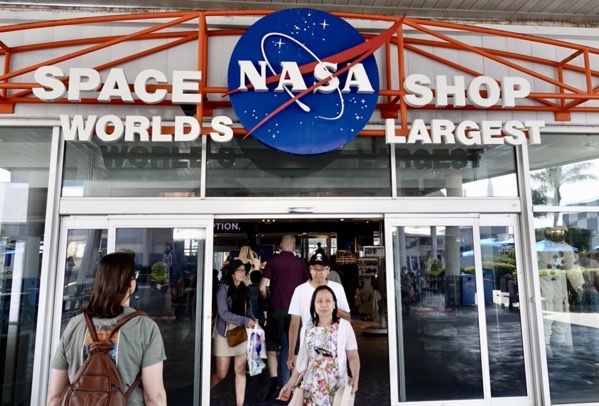
We drove about 45 minutes south from the Kennedy Space Center to our next stop: Space Coast RV Resort. Although we arrived after hours, we easily picked up our site information from a packet hanging outside the office and made our way to Site F15—a small back-in spot located near the rear of the campground. We discovered that, due to repairs of a water leak, the campground’s water supply was non-potable, so we would rely on our stash of bottled water.
After getting set up and enjoying dinner, we took a stroll around the campground to get our bearings and soak in the pleasant evening weather. We returned to the RV for a quiet and restful night. This was our third evening in the area, and while we had again hoped to catch a rocket launch, it was canceled. Maybe we’ll have better luck tomorrow night.
—— Space Coast RV Resort ——
